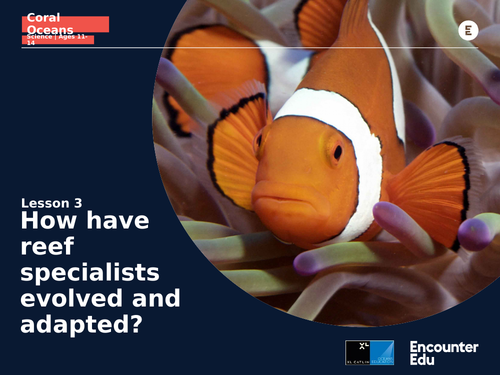



Different species have adapted to life on the coral reef in amazing and diverse ways. From sleeping in mucus bubbles, to flexible snakelike skeletons, life on the reef has had to find ingenious methods to find food and stay alive.
The reef is also host to numerous examples of symbiosis and finding food and safety in the strangest of places, whether that be in a shark’s mouth or ‘vacuuming’ the sandy seabed. In this lesson, students are challenged to create the ultimate reef organism.
This is a single lesson from the Coral Oceans Science KS3 unit. The lesson plans and accompanying activities are designed to introduce classes to what it is like to be an ocean explorer.
Each lesson is designed around a ‘dive’ to investigate a particular science topic. These include identification, classification, food webs and symbiosis, adaptation and human impacts on the environment.
The enquiry-based resources incorporate the scientists’ experiences and research, and enable students to explore marine life on the reef and the threats facing it.
Access the other lessons in this unit here: https://encounteredu.com/teachers/units/coral-oceans-science-11-14
Something went wrong, please try again later.
This resource hasn't been reviewed yet
To ensure quality for our reviews, only customers who have downloaded this resource can review it
Report this resourceto let us know if it violates our terms and conditions.
Our customer service team will review your report and will be in touch.
